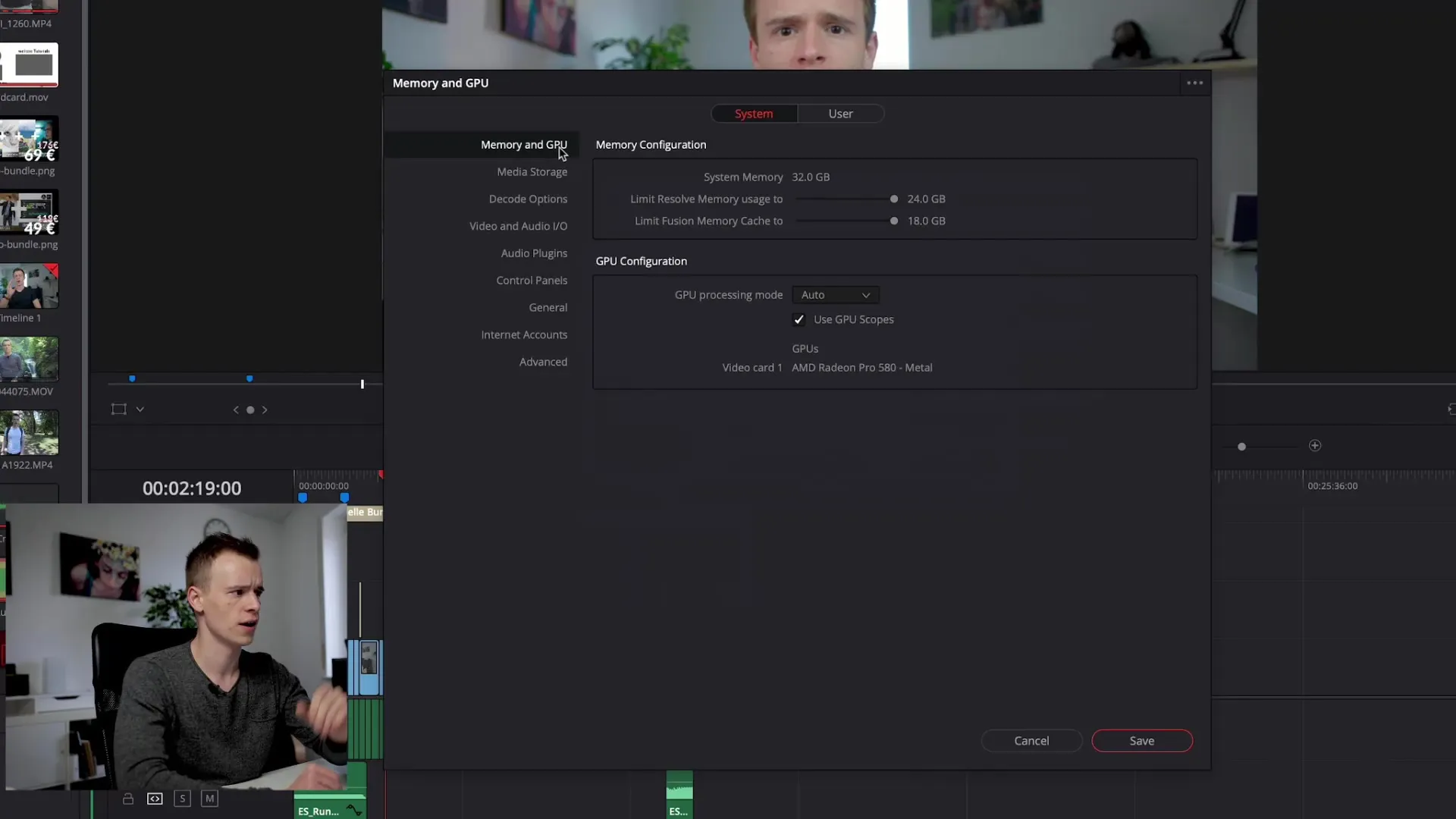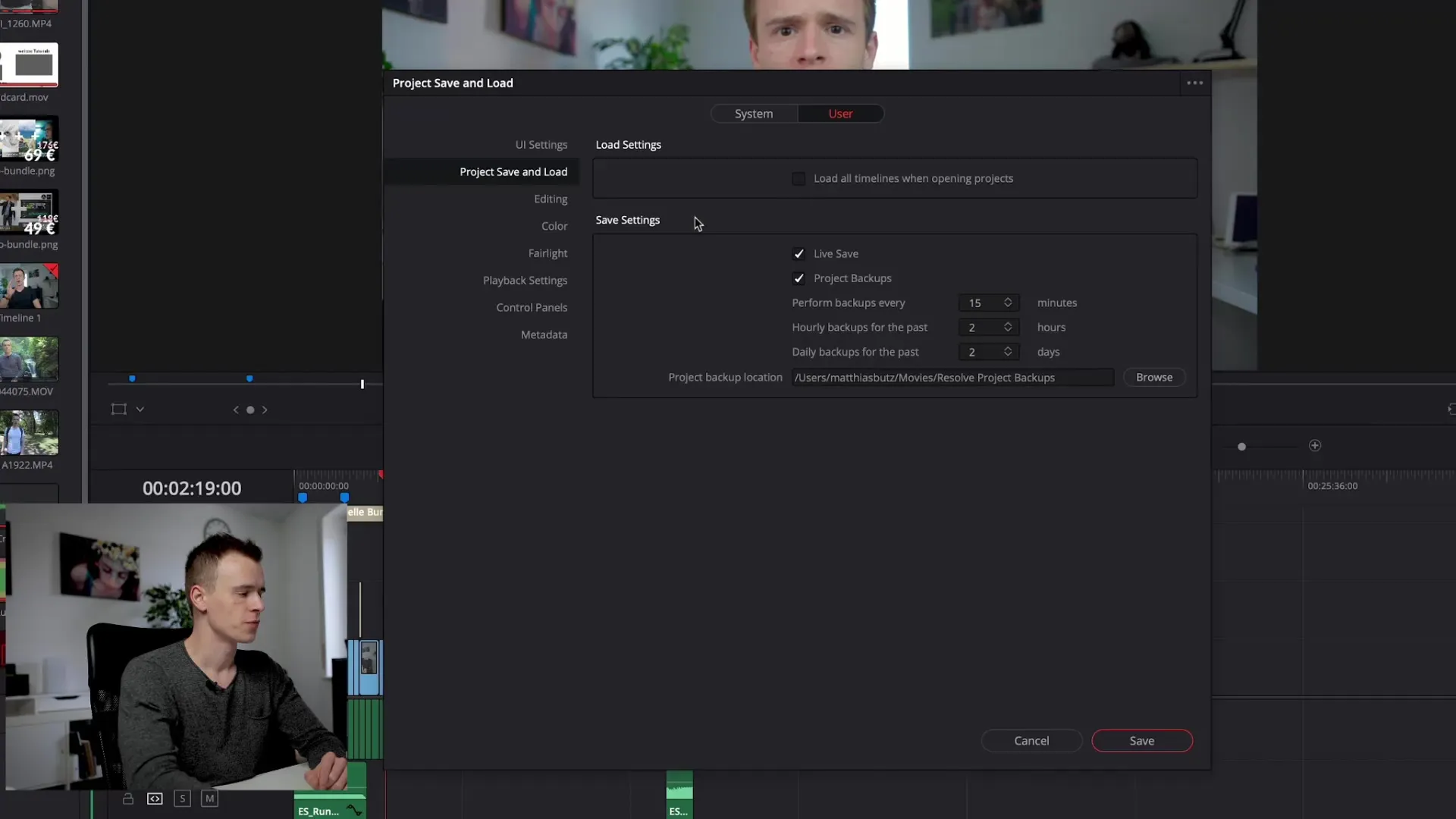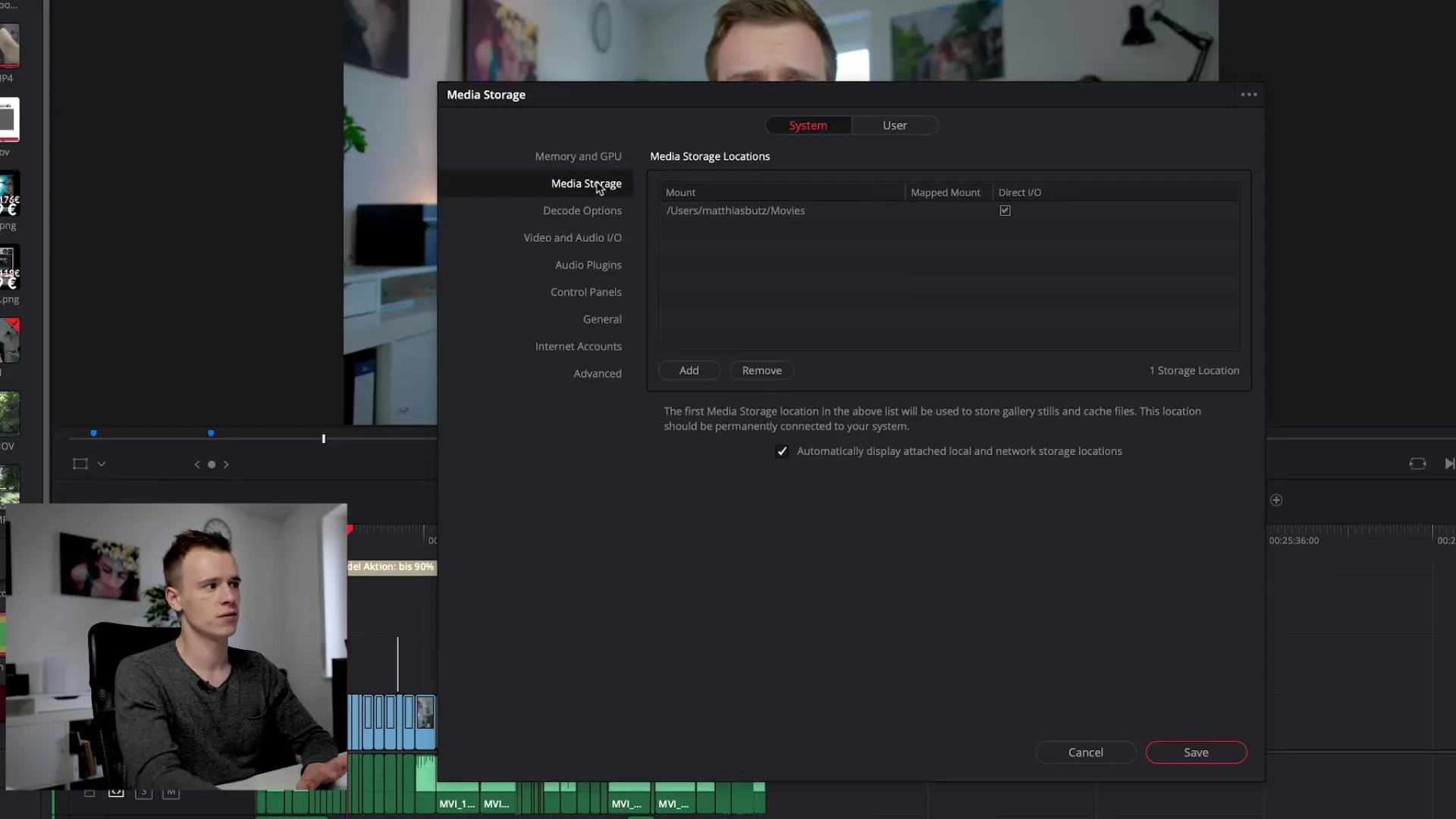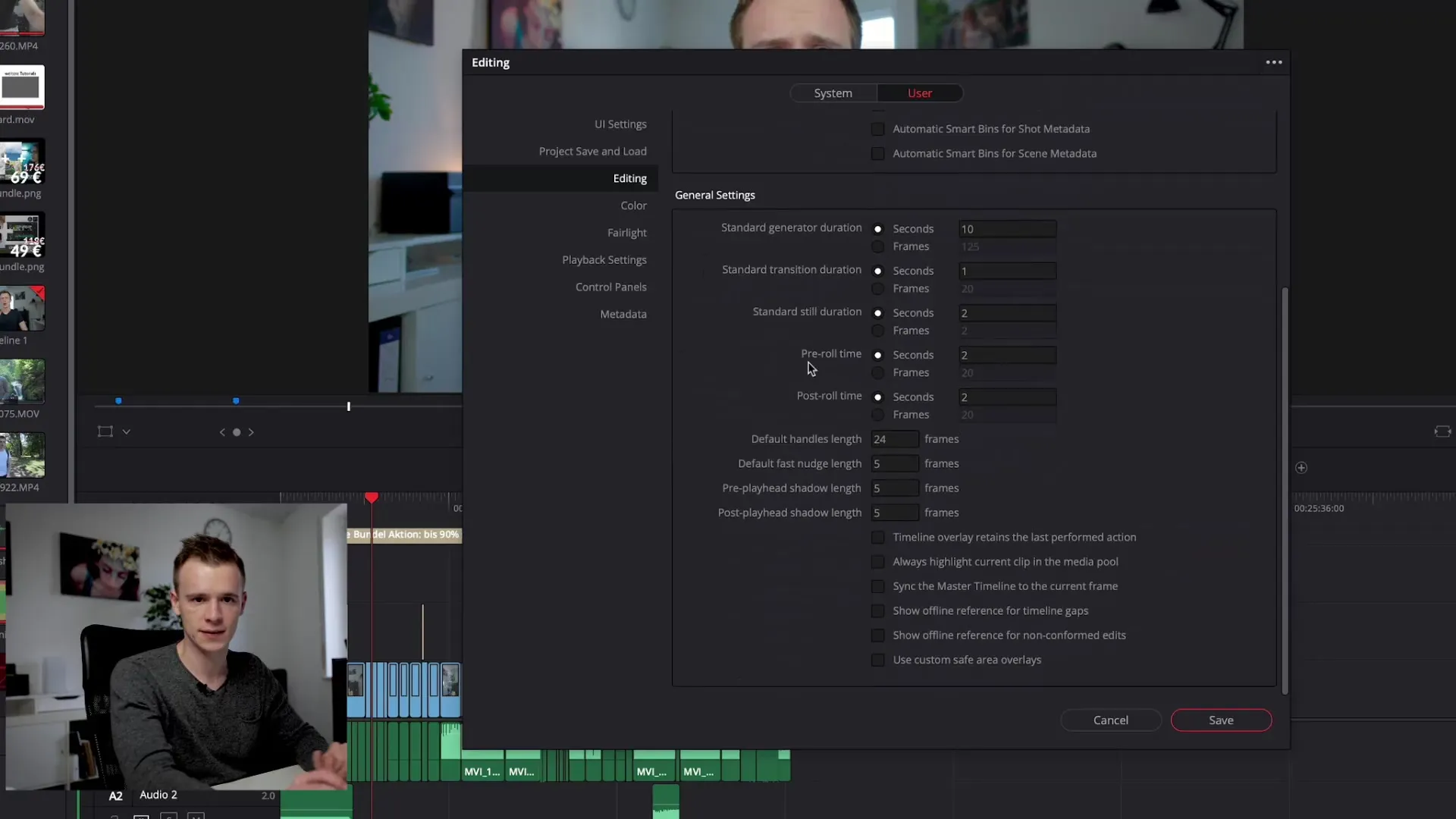Before you start editing your videos in DaVinci Resolve, it is crucial to configure the settings correctly. These settings not only affect the software's speed but also the user experience and performance during editing. The following guide provides you with a detailed step-by-step tutorial that shows you which options to adjust in DaVinci Resolve to work effectively.
Key Insights
- Proper configuration of memory and GPU can significantly improve performance.
- Auto-saving and regular backups are essential to avoid data loss.
- Selecting the right media storage locations is crucial for smooth editing.
- Adjustments in the editing area facilitate working with clips and transitions.
Step-by-Step Guide
1. Accessing the Settings
To open the system settings of DaVinci Resolve, press Command or Ctrl +,, or navigate to “DaVinci Resolve” in the top menu bar and click on “Preferences”. This will take you to a complex panel that offers many options.

2. Memory and GPU Configuration
Start in the “Memory” and “GPU Configuration” tab. Here you can specify the amount of memory that DaVinci Resolve may use. It is advisable to leave some memory for other programs running in the background - about 25%. If you have speed issues, it may help to raise this limit a bit. A powerful GPU is also important, as Da Vinci Resolve increasingly shifts processing to the graphics card.

3. Adjust Language and User Interface
Switch to the User area. Here you can customize settings for language and visual resource design. Use the options to set up the software according to your preferences.
4. Save Projects and Enable Backups
The “Project Save and Load” section is particularly important. Ensure that “Live Save” is enabled. This means that DaVinci Resolve saves automatically without constantly asking you. Also, set up project backups to ensure your progress is regularly saved. You can set how often backups should be made - for example, every 15 minutes, with a retention of two days.

5. Define Media Storage Locations
In the “Media Storage” area, you can specify the location for proxy files and cache files. It is advisable to set these on the fastest drive available to you, such as an SSD. Make sure the external hard drive is consistently connected to avoid issues during editing.

6. Set Default Duration for Clips
Switch to the "Editing" settings where you can set the default duration for which clips or images are displayed on the timeline. This is particularly helpful if you want to create a slideshow, as you can determine how long each image should be visible.

7. Adjust Optimized Media and Render Settings
In the “Project Settings,” accessible through the gear icon, you can set the settings for optimized media. Here you can select the desired resolution to speed up editing, as well as the format for saving. Whether the video should be saved compressed or uncompressed depends on your computer's performance.

8. Finalizing the Settings
Make sure to save all changes. Go through each setting step by step to check if the values meet your requirements. Each project can have its own settings, so be sure to choose the most suitable ones for your current project.
Summary – DaVinci Resolve Settings: Optimal Configuration for Your Video Editing
To create an effective working environment in DaVinci Resolve, the correct configuration of the settings is crucial. Be sure to use your memory and GPU efficiently, enable auto-saving, and choose the perfect media storage locations. This way, you will not only work faster but also experience less stress from data loss.
Frequently Asked Questions
How do I open the settings in DaVinci Resolve?You press Command or Ctrl +, or select “DaVinci Resolve” in the menu bar and click on “Preferences”.
What is the advantage of the live save feature?The live save feature automatically saves, preventing data loss during a crash.
Where should I set my media storage locations?The media storage locations should be set on the fastest drive, ideally an SSD.
How often should project backups be made?It is advisable to create backups every 15 minutes to regularly save your progress.
What role does the GPU play in video editing?The GPU handles much of the processing, significantly speeding up and facilitating video editing.


